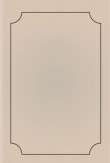قراءة كتاب The History of Insects
تنويه: تعرض هنا نبذة من اول ١٠ صفحات فقط من الكتاب الالكتروني، لقراءة الكتاب كاملا اضغط على الزر “اشتر الآن"
src="@public@vhost@g@gutenberg@html@files@10834@10834-h@images@0011b.png" alt="Picture of a Cricket" tag="{http://www.w3.org/1999/xhtml}img"/>
There are different kinds of the locust; those we are acquainted with, in this country, are represented in the above cut. In some seasons, they are scarcely heard at all; in others, they are more numerous. About the middle or latter part of summer, we hear them among the leaves of the trees: their notes, which are continued about the space of one minute, are loud at the beginning, and grow lower and lower, till they cease; when they immediately fly to another tree, begin again, and end in the same way, and so on.
In the eastern countries, a kind or kinds of locust, at different periods, have been very numerous, and have done abundance of damage. In the year 1650, a cloud of locusts entered Russia, in three different places; and from thence spread over Poland and Lithuania; the air was darkened, and the earth covered, in some places, to the depth of four feet; the trees bent with heir weight, and the damage sustained exceeded computation. Locusts were among the plagues of Egypt: sec Exodus, x. 15.
FLEA.
This very troublesome little animal multiplies very fast among old rags, dirt, straw, and litter, where hogs, cats, or dogs sleep; and in the hair and bristles of those creatures: therefore, as a means of avoiding such unwelcome neighbours, in the springs the cleanly farmer scrapes up the rubbish about his woodpile, and around his house and barn, and removes it into his field, where it also repays him by manuring his lands. They abound in warm countries, particularly in the southern parts of France and Italy.
When examined by a microscope, the flea is a pleasant object. The body is curiously adorned with a suit of polished armour, neatly jointed, and beset with a great number of sharp pins almost like the quills of a porcupine: it has a small head, large eyes, two horns, or feelers, which proceed from the head, and four long legs from the breast; they are very hairy and long, and have several joints, which fold as it were one within another.
LOUSE.
These loathsome animals, however unwelcome, attend in troops, and add to the afflictions of the unfortunate and lazy; but they are routed by the hand of industry and cleanliness.
In examining the louse with a microscope, its external deformity strikes us with disgust. It has six feet, two eyes, and a sort of sting, proboscis, or sucker, with which it pierces the skin, and sucks the blood. The skin of the louse is hard and transparent, with here and there several bristly hairs: at the end of each leg are two claws, by which it is enabled to lay hold of the hairs, on which it climbs. There is scarcely any animal known to multiply so fast as this unwelcome intruder: from an experiment of Lieuenhoek, a louse in eight weeks, may see five thousand of its descendants.
Among the ancients, what is called the lousy disease was not uncommon: Antiochus, Herod, and others are said to have died of this disorder.






